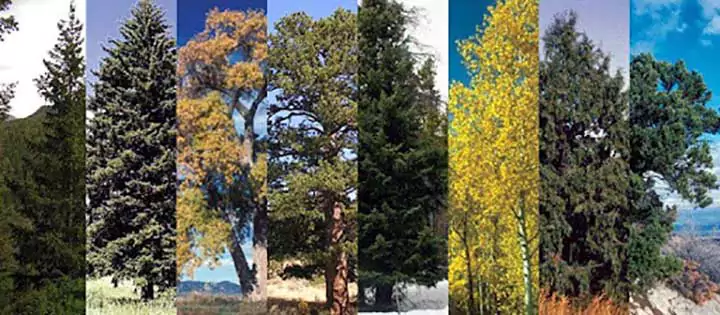Trees in Colorado are a staple to both residential and commercial landscaping. However, outside of normal watering schedules, trees are often forgotten when it comes to maintenance and disease/pest control.
Ensuring tree health will help avoid costly removal and potentially dangerous situations such as falling limbs.

Every Species of Tree and Shrubs Have Pest Problems Specific to Them
Spruce tree pests include tussock moth, cooley spruce gall adeligid, spruce bud worm, conifer aphids, mites, pine needle scale and cytospora canker.
Ash trees have problems with ash borer, curl leaf ash aphid, oyster shell scale, brown headed ash sawfly and anthracnose leaf fungus disease.
Honey locust trees get honey locust plants bugs, leafhoppers, spider mites and thyronectria canker.
Aspen trees have an entire book dedicated to their problems.
Emerald Ash Borer (Agrilis Planipennis)
This highly destructive insect aggressively attacks all ash trees. Untreated ash trees die in 3 to 4 years. These flat headed borers originated from Asia and were first detected in Michigan in 2002. This insect has since spread across America and was first detected in Boulder, CO in 2013. Emerald Ash Borer is on the move and was recently detected in Broomfield, CO in August of 2019 and Westminster, CO in September of 2019. The flight period for adults occurs in May where they seek out new ash trees for food and reproduction.
Symptoms and Signs Include:
- Canopy Thinning and Die Back
- Excessive Sucker/Sprout Growth
- D-Shaped Boring Holes
- S-Shaped Galleries Under Bark
- Frass/Sawdust at The Base of A Tree
- Woodpecker Damage
Preventive treatments include soil based, trunk sprays and trunk injections. Soil based and trunk sprays are annual treatments to kill the larvae. Trunk injections will last up to 2 years and are typically done in the fall.
Tree Trimming
Trimming of Trees Consists of:
- Crown clean, which is the removal of dead, diseased, dying limbs, broken limbs and branch stubs.
- Crown thinning, which is the thinning of densely growing limbs as well as removal of crossing and interfering limbs. Limbs interfering with buildings, adjacent plants, or that need to be elevated over streets, sidewalks, or walkways will be removed or growth redirected.
Removal of trees means that all above ground portions of the tree will be cut down to a stump and disposed of. Stumps cannot be cut flush to the ground with a chainsaw, this will require stump grinding. Stump grinding is a process in which a machine is used to extract the stump and root flare. Stumps are removed down to a minimum depth of 6”. Surface roots, if present, can also be extracted.
Fertilization of Trees
All plants need 16 essential elements to function. Nitrogen, phosphorus and potassium are generally the three limiting elements and are the main ingredients in fertilizer formulas. In Colorado the most common micronutrient deficiency is iron. Chelated iron formulations perform the best in the various soil types found in Denver.
There are 3 Main Ways to Fertilize Trees:
- Liquid Fertilizer Injection – Done by dissolving fertilizer in water and then injecting it into the soil around the root zone of a tree.
- Topical Application – Granular or diluted liquid fertilizer is spread across the soils surface.
- Tree Trunk Injection – This method bypasses the root system and puts nutrients directly under the bark of the tree where the fertilizer is dispersed thru the sap system. Trunk injection is usually done to correct specific nutrient deficiencies like iron chlorosis.
Bottom line, trees are much more complicated than we give them credit for. Caring for them correctly is essential and cost effective to long term alternatives. Need assistance with your trees? Contact OnePRO Services today for the care your trees deserve.
